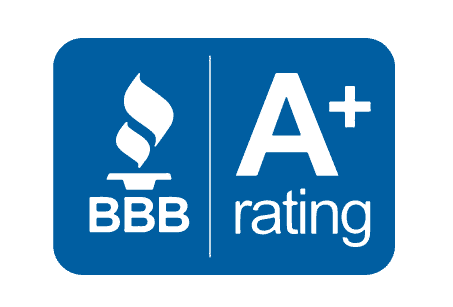
The addictive potential for drugs purchased over-the-counter or through prescriptions are often overlooked.
According to academic Dr. Joel Lexchin, drug advertising standards exacerbate this problem. It is essential to carry out thorough research before initiating use of any medication.
University of Toronto and York University professor Dr. Joel Lexchin recently published an article on The Conversation criticizing the advertising of medications in Canada. Lexchin and his colleague Dr. Barbara Mintzes previously published an academic paper on the regulation of this form of advertising, in 2014. Health Canada are responsible for regulating the advertising of non-prescription medication, but have continually reduced their influence in recent years. Before taking any medication, either prescription or over-the-counter, it is essential to understand its impact and potential side effects. One particularly dangerous side effect that people often overlook is the addictive potential of many medications.
Drug Advertising
In his recent article, Lexchin describes the process that lead to decreased regulation of drug advertising in Canada. He notes that, up until 1997, Health Canada had a direct involvement in the advertisements. Its clearance was required for scripts for over-the-counter drug adverts. However, in 1997, Advertising Standards Canada inherited this responsibility. This organization is a general industry watchdog without a specific focus on medical advertising. Advertising Standards Canada also only had responsibility for reviewing the advertisements, rather than regulating them as Health Canada had.
While Health Canada continued to set official standards for drug advertisements, they did not deal with complaints over advertisements that had breached these standards. Lexchin notes that there is “no public record of any evaluation of the adequacy of the new system in complying with Health Canada’s regulations.” He also notes that there is “no public record showing the number of complaints and how they are handled” with regards to drug advertising.
Regulations for Advertisement of Addictive Substances
In 2006, Health Canada further reduced its responsibility for regulating drug advertising. They judged that, while producers should include a “verbal cautionary statement” in their adverts, visual disclosures were also acceptable provided they were “clear, visible and of a sufficient duration to be effectively read and understood by consumers.” Lexchin judges that most drug advertisements fall well short of these standards, and that most disclosures were not easily read, much less understood. Furthermore, Health Canada also decided that producers would now “self-attest” that their advertisements met the established standards, rather than having to have them accepted by the organization prior to airing.
Rules were also relaxed in 2008, allowing for “‘Reminder ads,” which include brand name but not health claims or information about usage,” and for ads describing a particular condition and advising viewers to “ask your doctor” without mentioning specific brands of medication. Canadians also often see U.S. drug advertising due to the two nations’ proximity. U.S. drug advertisements can feature brand names, product descriptions, and statements of risk. Studies carried out by Mintzes and Lexchin demonstrate that consumers exposed to drug advertisements such as these are more likely to request specific drugs from doctors, and are more likely to be provided with prescriptions for them.
Under-regulated Industry
Measures such as these led Mintzes to conclude in 2014 that Health Canada operates too closely with the pharmaceutical industry. He also concluded that it does not do enough to regulate the way in which it advertises its products. Lexchin agrees, telling the Vancouver Sun in 2014, “The feds look at this like they can trust industry to follow the standards,” but that this is “a dangerous approach because drug companies have proven they know how to skirt the principles.”
Effects of Unclear Advertising
The lack of clarity provided by these advertisements is part of a dangerous pattern that leads to people consuming strong medications with effects they do not understand. People may believe that over-the-counter drugs are harmless and simply achieve the intended effect. However, there are a range of potential side effects for many people use. Some of these effects may be extremely dangerous- including addiction.
As noted by Jesse MacKinnon in a paper published in 2016 by the Canadian Pharmacists Journal, strong over-the-counter painkillers such as codeine are extremely accessible and their sale is highly unregulated. MacKinnon notes that “Most patients can easily buy 200 pills of these OTC narcotics as long as they simply tell the pharmacy cashier that they have ‘had it before.’” Health Canada reported in 2017 that 1,300 people are admitted to treatment in Canada each year due to addictions involving codeine. The federal government proposed making codeine prescription-only. However, this is only one issue among many in Canada’s problem with OTC drugs. Most people are not fully aware of the addictive potential of over-the-counter drugs. They often believe them to be harmless.
Effects of Advertisements of Addictive Substances
Persistent use of over-the-counter painkillers may also lead to reduced efficacy. This in turn often leads people to seek prescription painkillers, which are far stronger and more addictive. Many of the opiates consumed in Canada’s ongoing opioid crisis are initially accessed through legitimate prescription. The opiate painkiller oxycontin, for example, is one of the most abused drugs in the crisis. Doctors often prescribe it for relatively minor pain. Canada is now the world’s second highest consumer of pharmaceutical opioids.
Lexchin mentions some specific examples of over-the-counter drugs of which consumers may be unaware. He notes that, in the Toronto emergency department in which he works, he sees alcoholics “who have further damaged their liver because they took too much acetaminophen,” and “people with psychotic symptoms because they took too many antihistamines.” He notes that there are no warnings about these potential side effects in the advertisements for the responsible drugs. While labels sometimes mention them, he does not feel that this is sufficient warning.
Studies on Advertisement of Drugs
Mintzes also stated in the 2014 study that “a significant proportion of hospital emergency department admissions are related to adverse effects of prescription and over-the-counter medicines.” It’s worth noting that this was the case even before the opioid crisis had fully emerged. A study carried out by the National Council for Biotechnology Information and focusing on the period from 2006 to 2008 demonstrated that older Canadians were particularly vulnerable to non-comprehensive advertising and insufficient labelling. Science Daily also reported on a University of British Columbia study in 2011 which concluded that hospital patients in Canada “presenting with an adverse drug event had a 50% greater risk of spending additional days in hospital, as well as a 20% higher rate of outpatients health care needs” when compared to other patients. Dr. Corinne Hohl, who worked on the study, stated that “nearly 70% of those incidents are preventable.”
Lexchin concludes his recent article by stating that “People deserve to know about the safety risks of medicines that they buy,” and that “It’s time Health Canada took back the regulation of OTC advertising.” Mintzes told the Vancouver Sun in 2014 that the process around drug advertising in Canada “lacks accountability and transparency,” and noted that any issues over specific advertisements appeared to be settled through private negotiation, as there is no evidence of fines or other sanctions available. Health Canada responded to the Vancouver Sun’s article on the paper. They stated that they uphold their rules and diligently investigate any complaints.
Researching Medications & Treatment for Dependence
Before using any medication, it is essential to understand its uses and potential side effects. Unfortunately, drug advertisements often fail to provide the necessary information in these regards. Even if pharmacist or doctor recommend or prescribe a drug, users should carry out research. One area worth addressing with a medical professional is the addictive potential of a drug. This is particularly true if they are recommending or prescribing it for sustained use. Doctors often prescribe patients suffering with chronic pain medicates to use over a sustained period. This carries a particular risk of addiction, as people can develop dependence on drugs very quickly. This is especially true for opiate painkillers such as Oxycontin.
If you are a loved one have developed an addiction to a medication, seek out professional help. Dedicated professional addiction treatment such as that offered by Trafalgar Addiction Treatment Centres can help a person to overcome addiction to medication and restore order to their life. Methods such as cognitive behavioural therapy, focused individual therapy and group counselling allow a person to identify the underlying causes and consequences of their addiction. They help them to develop methods for dealing with them in a healthy and progressive manner.





